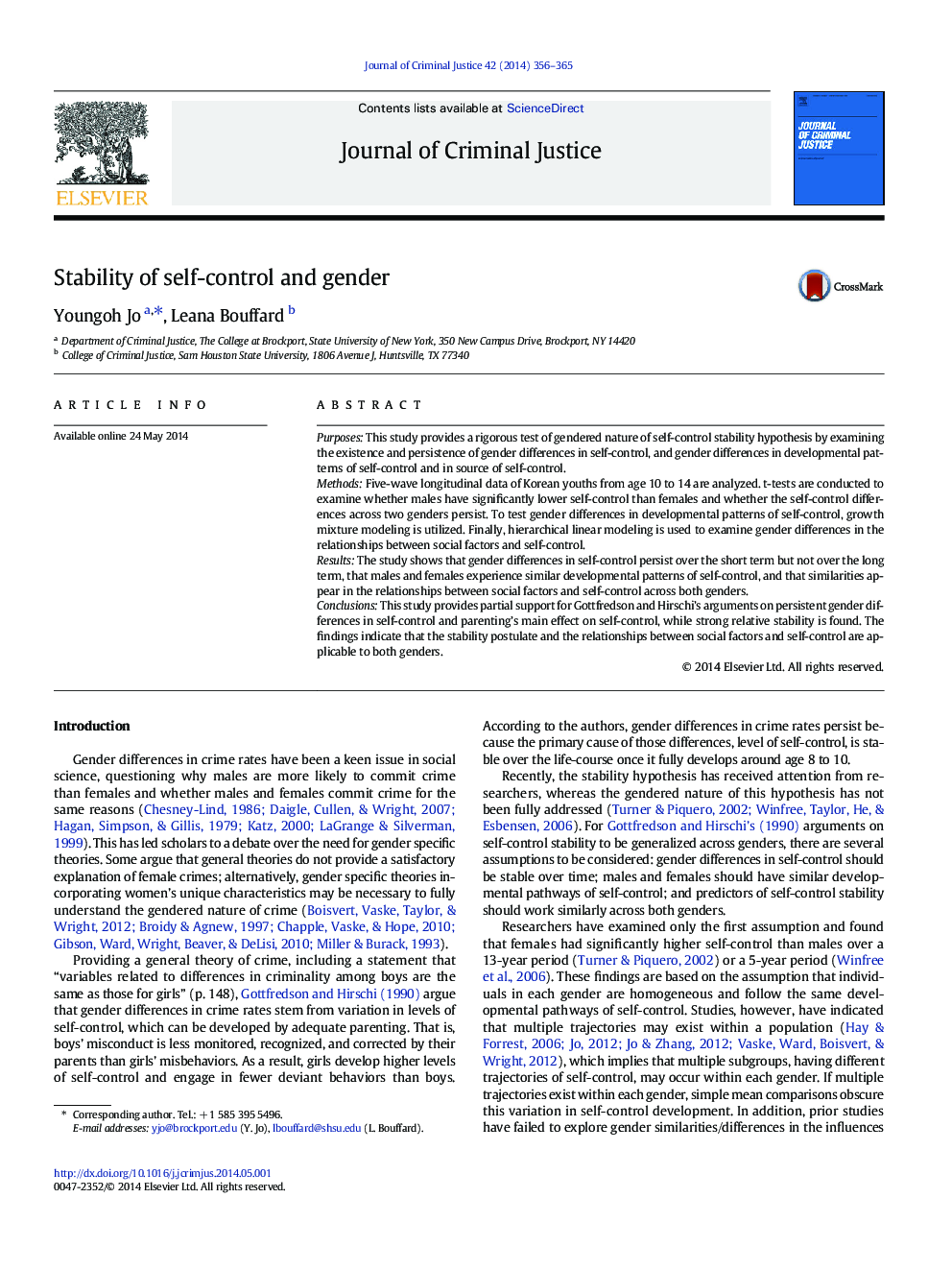| کد مقاله | کد نشریه | سال انتشار | مقاله انگلیسی | نسخه تمام متن |
|---|---|---|---|---|
| 882675 | 912012 | 2014 | 10 صفحه PDF | دانلود رایگان |
• Gender differences in levels of self-control exist over the short term.
• Both genders experience similar developmental patterns of self-control.
• Similarities appear in the source of self-control across both genders.
• Self-control stability postulate can be applied to both genders in general.
PurposesThis study provides a rigorous test of gendered nature of self-control stability hypothesis by examining the existence and persistence of gender differences in self-control, and gender differences in developmental patterns of self-control and in source of self-control.MethodsFive-wave longitudinal data of Korean youths from age 10 to 14 are analyzed. t-tests are conducted to examine whether males have significantly lower self-control than females and whether the self-control differences across two genders persist. To test gender differences in developmental patterns of self-control, growth mixture modeling is utilized. Finally, hierarchical linear modeling is used to examine gender differences in the relationships between social factors and self-control.ResultsThe study shows that gender differences in self-control persist over the short term but not over the long term, that males and females experience similar developmental patterns of self-control, and that similarities appear in the relationships between social factors and self-control across both genders.ConclusionsThis study provides partial support for Gottfredson and Hirschi’s arguments on persistent gender differences in self-control and parenting’s main effect on self-control, while strong relative stability is found. The findings indicate that the stability postulate and the relationships between social factors and self-control are applicable to both genders.
Journal: Journal of Criminal Justice - Volume 42, Issue 4, July–August 2014, Pages 356–365
